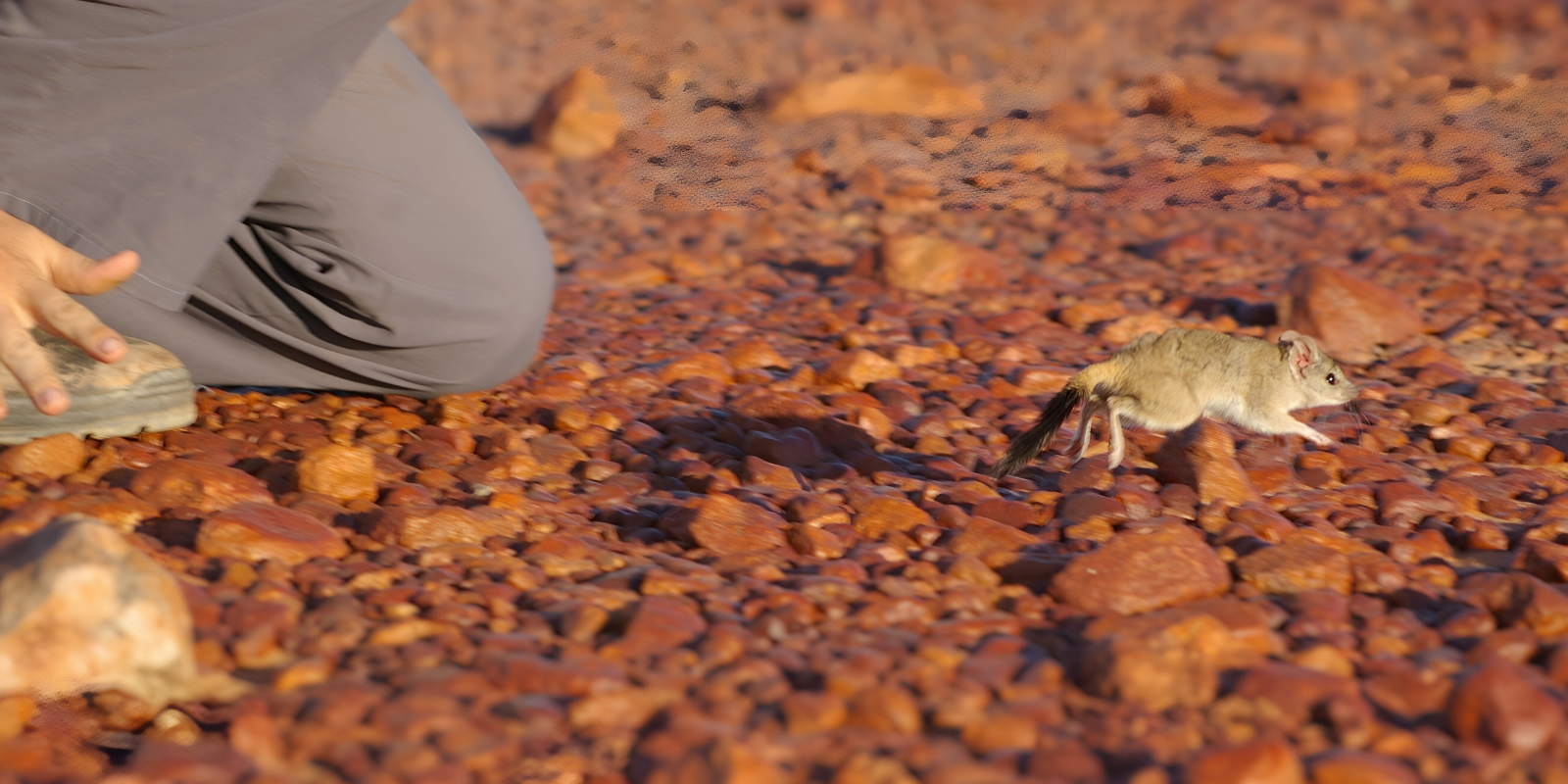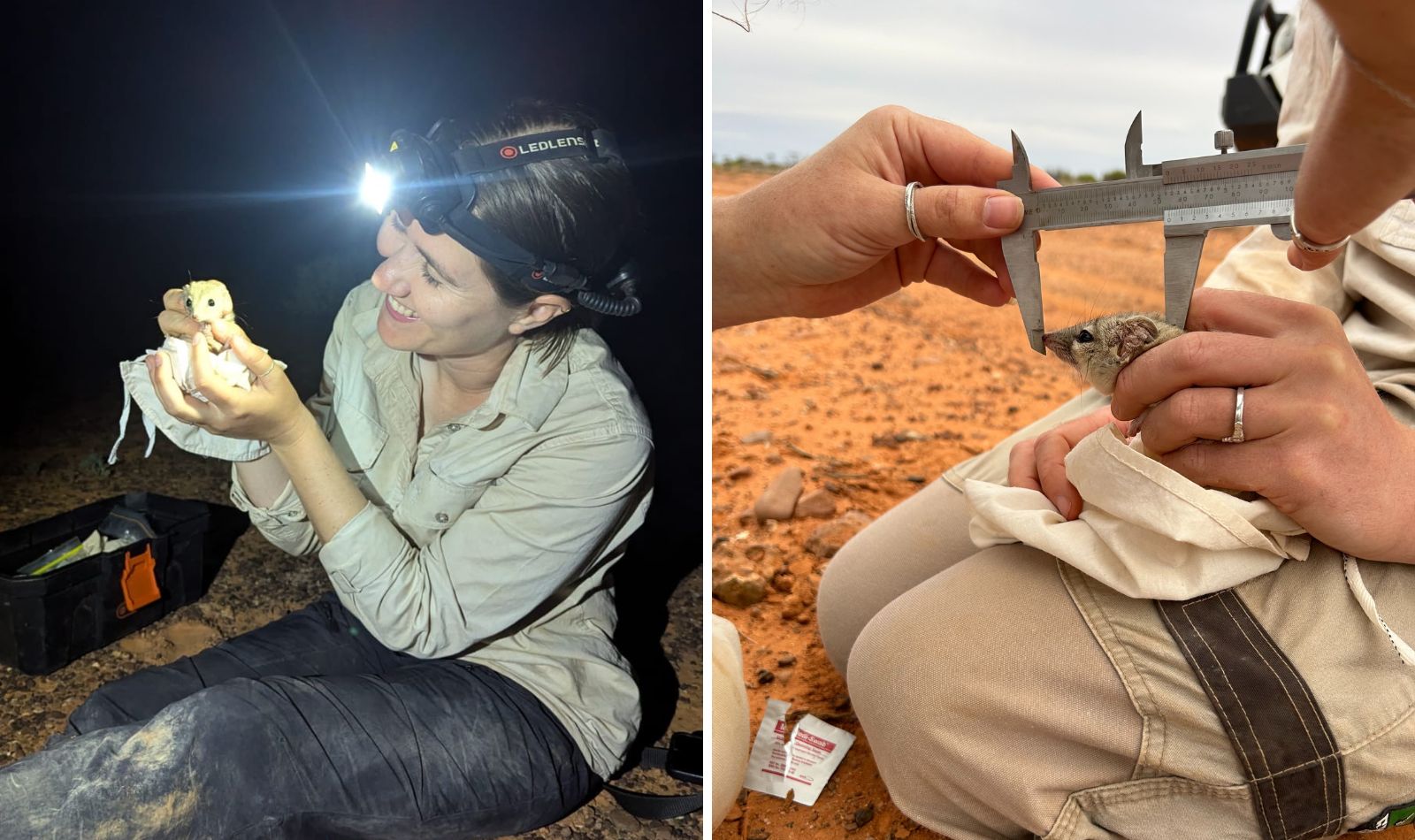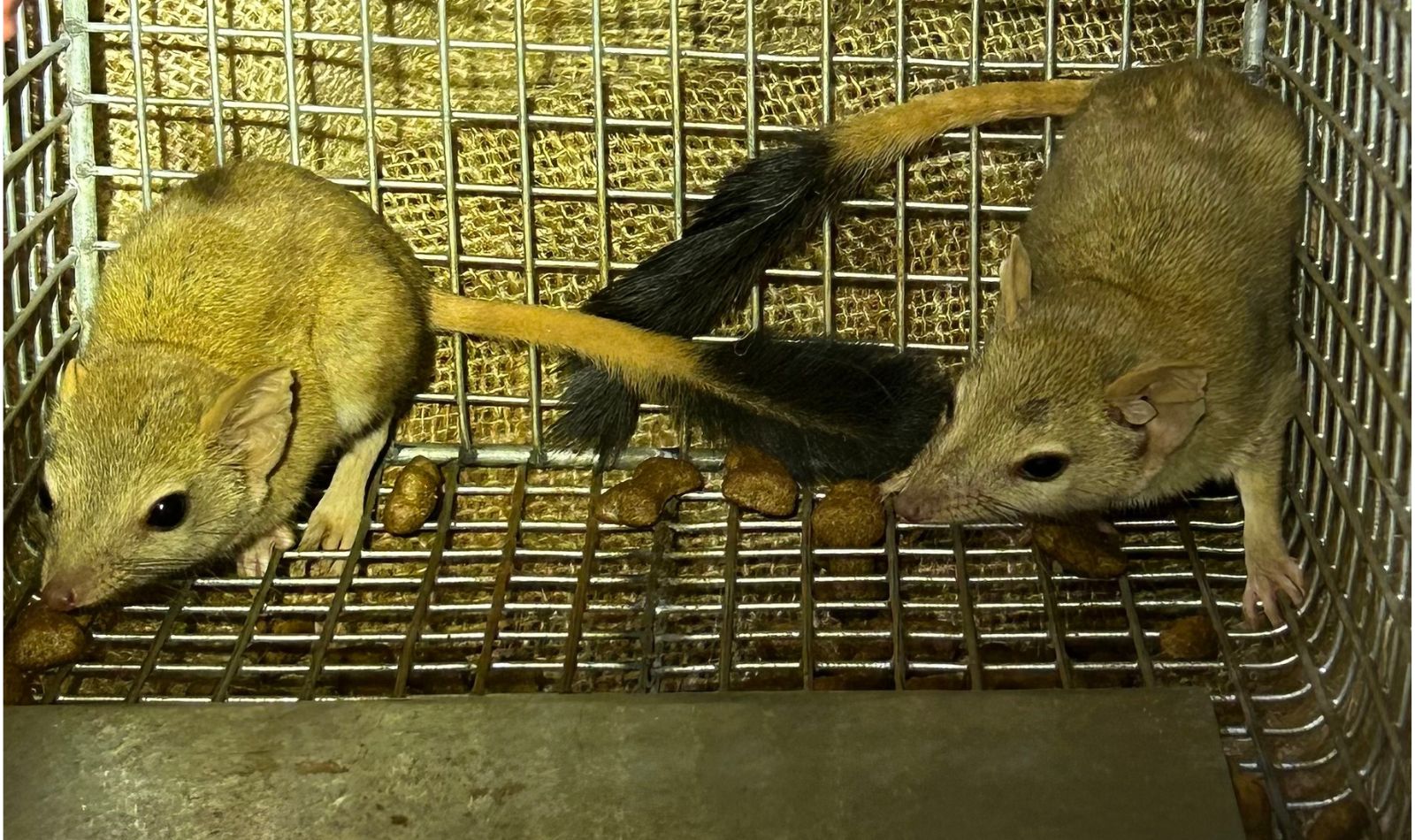Kowaris were on the move in 2024
Arid Recovery
29 January 2025

Kowaris are making a comeback at Arid Recovery. But with their Endangered status, every discovery counts in the fight to save them
Twelve kowaris were introduced to Arid Recovery in 2022 to establish an insurance population within a safe haven and to help us better understand how we can protect them in the wild. Without conservation action, these animals could disappear from the wild within 20 years. Two years after the translocation, kowaris are thriving at Arid Recovery. Our latest trapping surveys in 2024 recorded 47 individual kowaris across June, August, November, and December. Not only is the population increasing, but these carnivorous marsupials are expanding their range; initially placed within one paddock at the Reserve (Red Lake paddock), individuals are now found across three paddocks (Northern, Dingo, and Red Lake). Signs of breeding are also promising, with nine lactating females and many juveniles caught throughout the year.
Despite these positive signs at Arid Recovery, little is known about what is causing kowaris to decline in the wild. That’s where PhD candidate and Team Kowari president Molly Barlow comes in. As part of her research to understand what is threatening populations, 13 juveniles at Arid Recovery were fitted with radio-transmitter collars and tracked for up to 11 weeks. It’s kind of like following young adults once they leave home; some find their feet quickly, while others take a bit longer. Molly is trying to investigate whether factors like feral cats, cattle grazing, or something else might be barriers to their movement and survival.
 (left) Molly recapturing a kowari to remove the radio tracking collar, and (right) in the field a kowari's head is mesured. The kowaris that Molly tracked across the reserve used a mix of plains mouse warrens and large calcrete warrens with multiple entrances for shelter. The small amount of data collected so far, suggests that juveniles may stay within a 2-km area of where they were denned, moving between a few key shelter sites rather than making long-distance movements. Some were even still sharing dens with their siblings or mother, a bit like young adults moving out only to end up back at home for a while. It may be that kowaris do not fully disperse until later in the season.
(left) Molly recapturing a kowari to remove the radio tracking collar, and (right) in the field a kowari's head is mesured. The kowaris that Molly tracked across the reserve used a mix of plains mouse warrens and large calcrete warrens with multiple entrances for shelter. The small amount of data collected so far, suggests that juveniles may stay within a 2-km area of where they were denned, moving between a few key shelter sites rather than making long-distance movements. Some were even still sharing dens with their siblings or mother, a bit like young adults moving out only to end up back at home for a while. It may be that kowaris do not fully disperse until later in the season.
 This lucky trap caught two kowaris. We entice them into the trap with dog biscuits soaked in tuna oil. If there was ever a year to celebrate the kowari, 2024 was it! This little-known marsupial captured the public’s attention when it was nominated in Channel 10’s The Project Marsupial of the Year Competition. Thanks to incredible public support, the kowari made it to the Top 10 and raised over $8,000 for its conservation. This is a testament to the passion and dedication of our supporters. We can’t save what we don’t know, and every extra person who learns about the kowari is one step closer to ensuring its survival.
This lucky trap caught two kowaris. We entice them into the trap with dog biscuits soaked in tuna oil. If there was ever a year to celebrate the kowari, 2024 was it! This little-known marsupial captured the public’s attention when it was nominated in Channel 10’s The Project Marsupial of the Year Competition. Thanks to incredible public support, the kowari made it to the Top 10 and raised over $8,000 for its conservation. This is a testament to the passion and dedication of our supporters. We can’t save what we don’t know, and every extra person who learns about the kowari is one step closer to ensuring its survival.
Understanding how kowaris move and what might be limiting their spread is crucial for their conservation. With continued research, protection, and publicity we hope to secure a future for the kowari.
Photo credits: Molly Barlow and Billy LaMarca